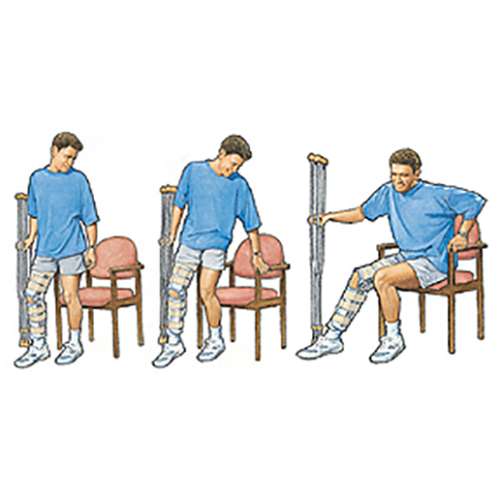Understanding Crutch Types and Which Is Best for You
Crutches assist human beings who’ve accidents or ailments that have an effect on their legs walking. They may be used for a brief time period, which includes for the duration of restoration from an accident or surgery, or a long time period, which includes for a lifelong incapacity.
There are three number one varieties of crutches. The proper kind for you depends on why you want the crutches and on your typical health.
What are the unique varieties of crutches?
There are three number one varieties of crutches:
Underarm Crutches.
Underarm crutches are also known as axilla crutches and are the most common kind of crutch. These crutches are located under your arm to be used and may be adjusted for height. They are smooth to apply and provide stability, but can result in pain and fatigue.
Forearm crutches.
Forearm crutches are also known as strand or elbow crutches. These crutches have a cuff that goes around your forearm and handles on your hand to grip. Forearm crutches are most commonly used by folks that want lengthy-term crutches.
Crutches are made easier with the help of the forearm.
Forearm crutches are also known as adjustable arthritic crutches, platform crutches, or gutter crutches. They have padded forearms and adjustable handles, which could assist folks that want greater help from their crutches.
In instances wherein someone’s harm or incapacity only impacts one leg, they could use a specialized crutch known as a leg help crutch. A leg aid crutch isn’t a conventional crutch. You don’t use your fingers or palms with this crutch. Instead, the knee of your injured or affected leg is bent and rests on a knee pad. It’s secured with straps going up the thigh and across the calf. The backside of the crutch extends to the floor and permits you to walk.
Why are there unique varieties of crutches?
The proper crutches for you’ll rely on your situation, your physician’s recommendations, and your top frame of electricity. Each crutch kind has pros and cons. For example, forearm crutches require the maximum top frame electricity, but many human beings discover underarm crutches simpler to grasp. Other variations include:
Underarm crutches.
Underarm crutches are usually used for human beings recovering from harm or surgery. They’re generally used for folks that will probably want them for one to a few months. They require much less top-frame electricity and frame management than forearm crutches.
Forearm crutches.
Forearm crutches are frequently used as a lengthy–time period mobility resource for human beings with an incapacity that impacts their legs. You want an excellent arm and top frame electricity to apply forearm crutches. Once human beings grasp forearm crutches, they frequently discover they are an awful lot simpler to navigate and more stable than underarm crutches.
Crutches are made easier with the help of the forearm.
Forearm crutches are used for folks that want extra help, which includes people with arthritis or different persistent ache situations. They can relieve a few strains on the frame and assist human beings in those difficult situations by continuing to be mobile.
Individual factors will also determine the best crutches for you. Underarm crutches, for example, will no longer be used by anyone who needs crutches for a short period of time. Your physician or bodily therapist may propose forearm crutches for you instead. You may also transition from one crutch type to the other for the duration of recovering from your injury.
Getting help paying for your crutches
Crutches can have multiple charges depending on the style and material. Underarm crutches are usually the least expensive and may be made of wood or metal. Forearm crutches and forearm help crutches may be simple, foldable, or deluxe and may cost a few hundred dollars.
If you want crutches, there are some ways you could pay for them.
Health coverage.
Most coverage businesses will cover simple underarm crutches if you want them. They’ll usually additionally cover lengthy–time period forearm crutches in case your physician or therapist says that they’re necessary. You can name your plan to invite in case you’re no longer positive which crutches are blanketed.
Medicare.
Crutches are covered under Medicare Part B in durable medical equipment coverage, as long as your physician and crutch provider accepts Medicare. You might be required to pay 20% of the accredited cost, in addition to any relevant deductibles. You may be required to hire or buy your crutches depending on your clinical situation and wishes.
Healthcare DME store.
A very reasonable price In a few instances, it’d also be much less than the copayment you’d have to make for the use of insurance.
Rental crutches.
You can hire crutches in case you realize you’ll want them within a brief time period. Renting crutches is usually more inexpensive than buying them. Healthcare DME provides crutch rental.
The takeaway
There are three number one varieties of crutches. The proper type for you’ll depend on why you want the crutches, your body stability, and what your physician or bodily therapist recommends.
Most types of crutches will be covered by your health insurance. You can also rent crutches or purchase them at a healthcare DME store located in Ann Arbor, MI, United States.
Now you can buy your Underarm Crutches or get them covered by Medicaid and most major private health insurance plans, including BlueCross, BlueShield, Humana, Aetna, and more. Available at our store in Ann Arbor, MI, United States. We offer nationwide and global fast shipping.


